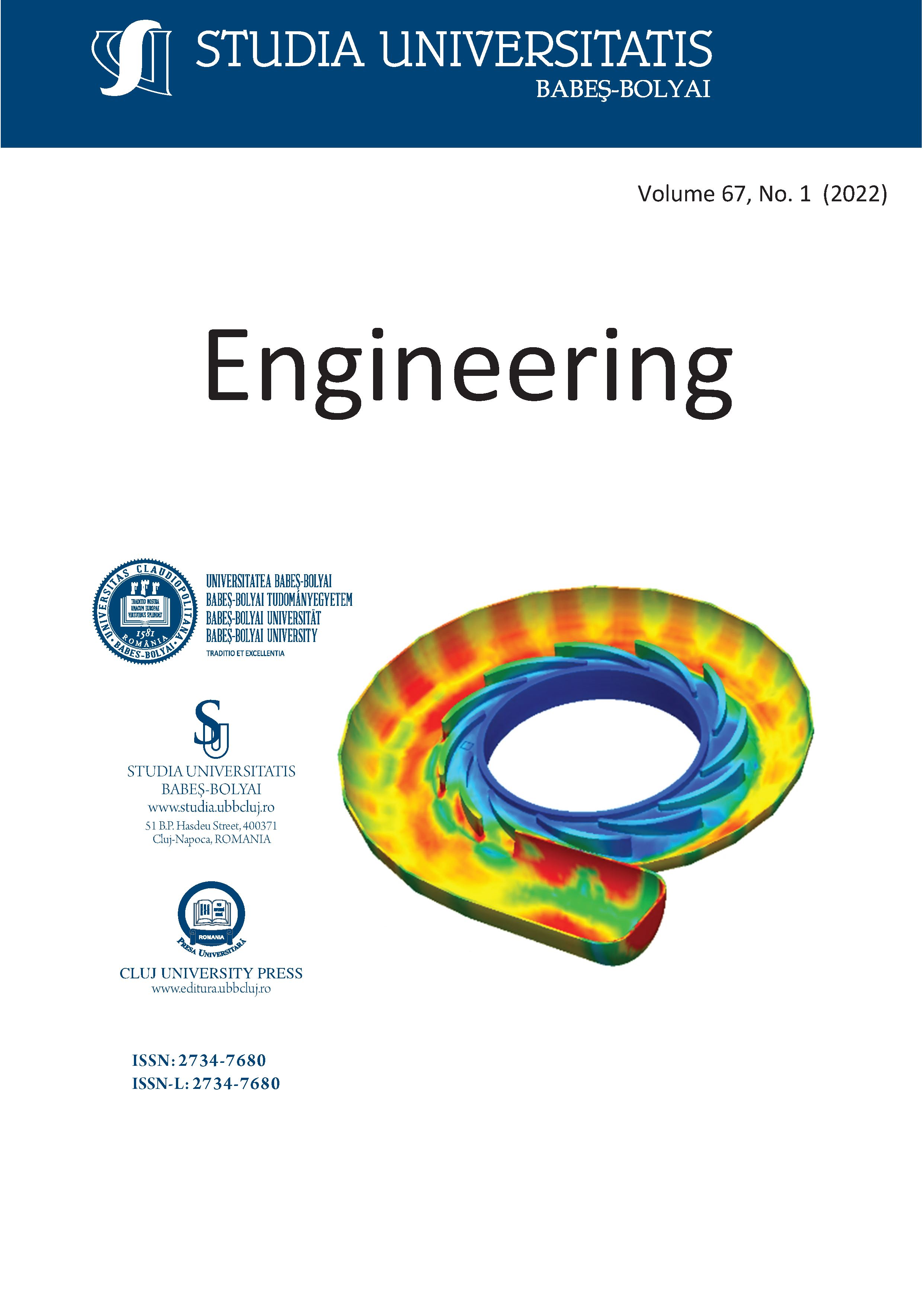Sine Wave Electromagnetic Generation Using H-Bridge and Microcontroller
DOI:
https://doi.org/10.24193/subbeng.2022.1.10Keywords:
sine electromagnetic wave, WiFi microcontroller, H-bridge, software PWM, vibration based modal analysis.Abstract
The paper presents a way of accomplishing a non-contact excitation by electromagnetic waves generated from a system that includes WiFi microcontroller, H-Bridge and coil. The ESP 32 microcontroller software achieves PWM signal, which follows’ a sinusoidal shape of variable frequency. The PWM signal drives the H-bridge resulting in a more powerful electric signal that also drives the coil, accomplishing in this way the pseudo-sine electromagnetic wave. The source code from microcontroller provides variable frequency and working period as well. The main features of the system are 0.5 to 3000 Hz, working periods between 0.1 and 10 seconds, the possibility to achieve more than one working period with standby periods in between.References
Zhou Z., Wegner L.D., Bruce F., Sparling Data quality indicators for vibration-based damage detection and localization, Engineering Structures, 230(1), March 2021.
Pereira S., Magalhaesa F., Gomes J.P., Cunha A., Lemo J.V., Vibration-based damage detection of a concrete arch dam, Engineering Structures. 235(1), May 2021
Zhu S., Zhang Q., Zhai W., Yuan Z., Cai C., Sensor deploying for damage identification of vibration isolator in floating-slab track using deep residual network, Measurement, 183, Oct. 2021.
Firrone C.M., Berruti T., An Electromagnetic System for the Non-Contact Excitation of Bladed Disks, Experimental Mechanics, 2012.
Xu K., Yan X., Du D., Sun W., Vibration response prediction of coated blisks under multi-point non-contact excitations using mistuning identification data, Thin-Walled Structures, 159, Febr. 2021.
ESP 32 datasheet: https://espressif.com/sites/default/files/documentation/esp32_datasheet_en.pdf
L298N datasheet: https://eu.mouser.com/datasheet/2/389/l298-1849437.pdf
Downloads
Published
How to Cite
Issue
Section
License
Copyright (c) 2022 Studia Universitatis Babeș-Bolyai Engineering

This work is licensed under a Creative Commons Attribution-NonCommercial-NoDerivatives 4.0 International License.



